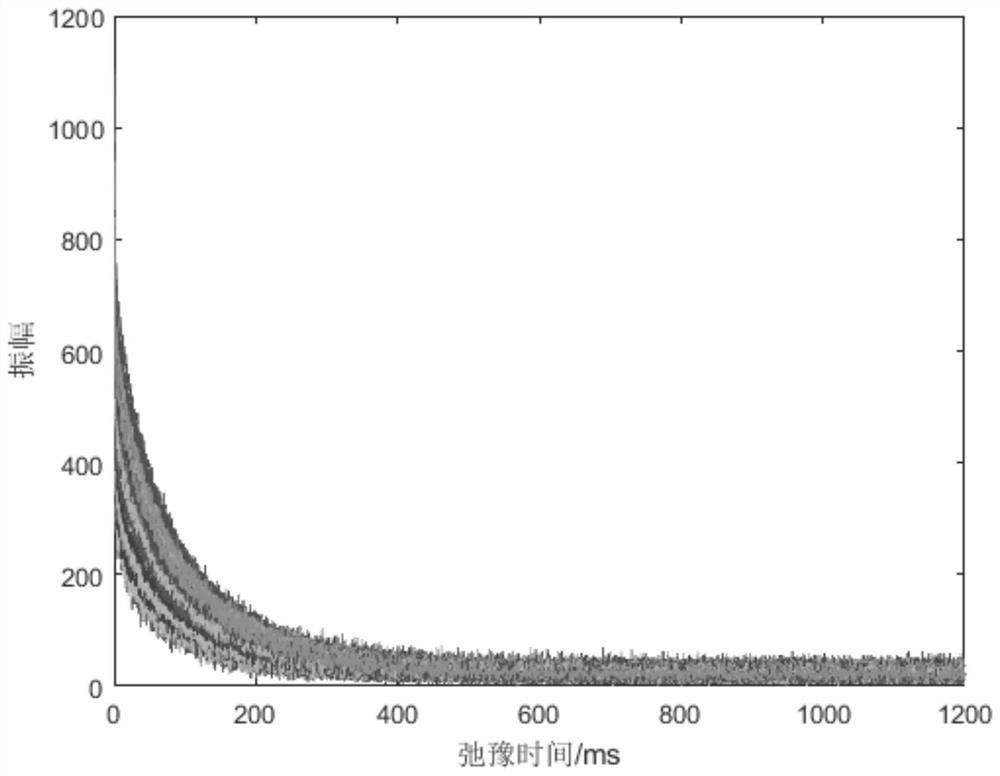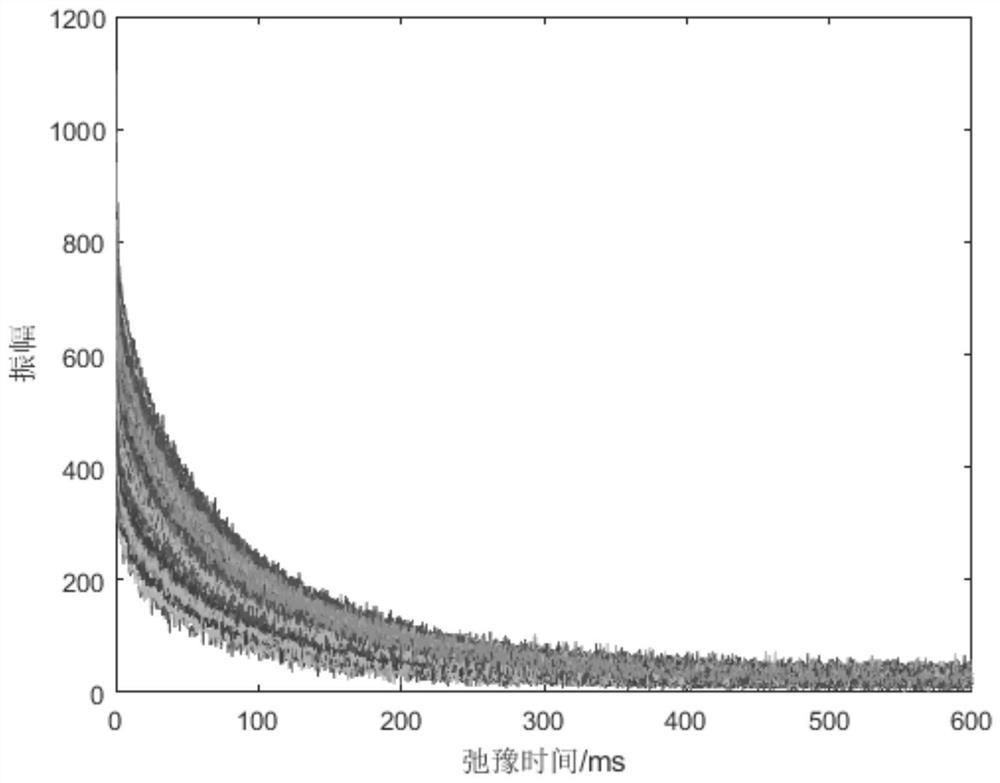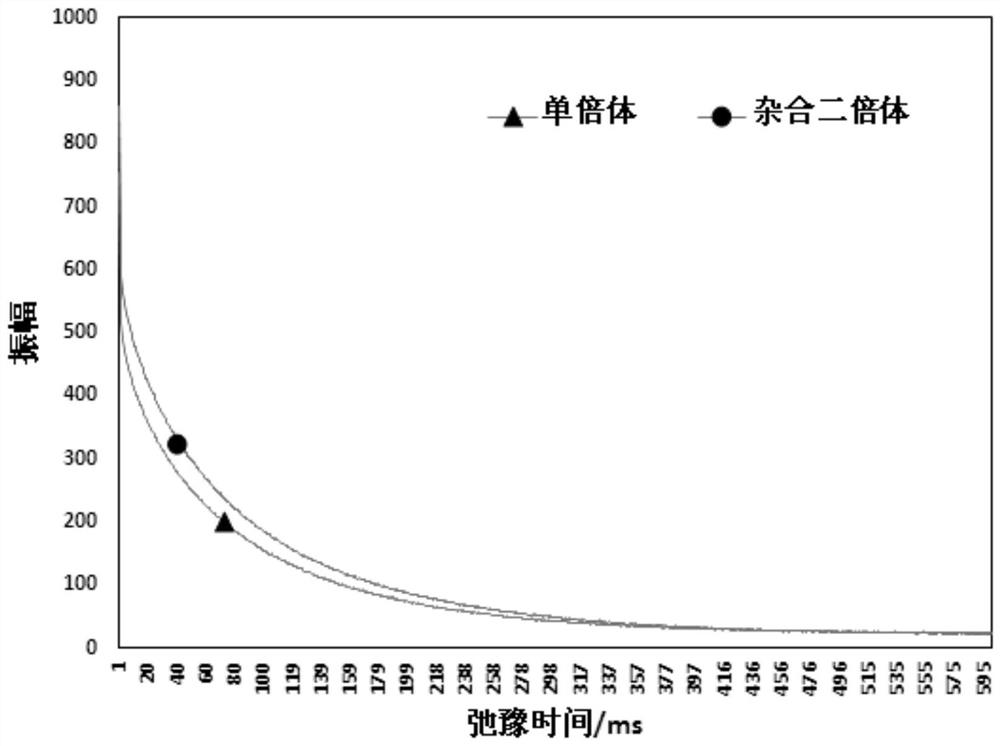A method for identifying maize haploid kernels based on NMR cpmg decay curves
An attenuation curve and haploid technology, applied in the field of corn haploid grain identification, can solve problems such as visual fatigue, differences in expression clarity, and differences in identification accuracy
- Summary
- Abstract
- Description
- Claims
- Application Information
AI Technical Summary
Problems solved by technology
Method used
Image
Examples
Embodiment 1
[0087] Embodiment 1, the preparation of hybrid population
[0088] The method of identifying haploid and heterozygous diploid: after the ears of corn are mature, harvest the ears obtained by hybridization and place them in a dry environment to dry; In the selection of individual (diploid) grains, those with purple endosperm and colorless embryo scutellum are haploid grains, and those with purple endosperm and purple embryo scutellum are heterozygous diploid grains. Using this method to screen haploids and heterozygous diploids from the hybrid progenies obtained in this example, the haploids are true haploids, and the heterozygous diploids are true diploids.
[0089] Time: 2017. Location: Hainan.
[0090] The maize Zhengdan 958 was used as the female parent, and the maize haploid inducible line CAU3 was used as the male parent to perform hybridization to obtain hybrid offspring (grains); 45 haploid and 45 hybrid offspring were randomly selected from the hybrid offspring (grai...
Embodiment 2
[0099] Embodiment 2, NMR signal acquisition
[0100] Each grain in the hybrid population B is processed as follows:
[0101] 1. Weighing.
[0102] 2. Using nuclear magnetic resonance instrument and supporting nuclear magnetic resonance analysis software "CPMG (carr-purcell-meiboom-gill, CPMG) pulse sequence" for nuclear magnetic signal acquisition. The parameters are set as follows: TW=800ms, TE=0.600ms, NS=16. Obtain a CPMG decay curve for each kernel.
[0103] 3. Quality normalization (eliminate the influence of grain weight on signal volume)
[0104] The amplitude corresponding to each time point was divided by the weight of the grain to normalize the data to obtain a mass-normalized CPMG decay curve (one mass-normalized CPMG decay curve was obtained for each grain).
[0105] The software used for mass normalization is: Microsoft Excel 2016 MSO 32-bit.
[0106] 4. Band selection
[0107] The mass-normalized CPMG decay curve (full relaxation time) of each grain is show...
Embodiment 3
[0111] Embodiment 3, the selection of data processing mode
[0112] The model was established 100 times, and the results were averaged. In each model establishment, 80% haploids and 80% heterozygous diploids are randomly selected from hybrid population B to form the training set, and the remaining 20% haploids and 20% heterozygous diploids form the verification set.
[0113] 1. The data of the training set grains are processed as follows
[0114] Carry out data processing to the 0-600ms section of the CPMG decay curve after the quality normalization that embodiment 2 obtains, then carry out principal component analysis, adopt the first 100 principal components as variables, adopt support vector machine algorithm to construct haploid discrimination Model.
[0115] Data processing methods are: 10-point smoothing (S), first-order derivation (D), vector normalization (V), 10-point smoothing followed by first-order derivation (SD), 10-point smoothing Afterwards, vector normali...
PUM
 Login to View More
Login to View More Abstract
Description
Claims
Application Information
 Login to View More
Login to View More - R&D
- Intellectual Property
- Life Sciences
- Materials
- Tech Scout
- Unparalleled Data Quality
- Higher Quality Content
- 60% Fewer Hallucinations
Browse by: Latest US Patents, China's latest patents, Technical Efficacy Thesaurus, Application Domain, Technology Topic, Popular Technical Reports.
© 2025 PatSnap. All rights reserved.Legal|Privacy policy|Modern Slavery Act Transparency Statement|Sitemap|About US| Contact US: help@patsnap.com



